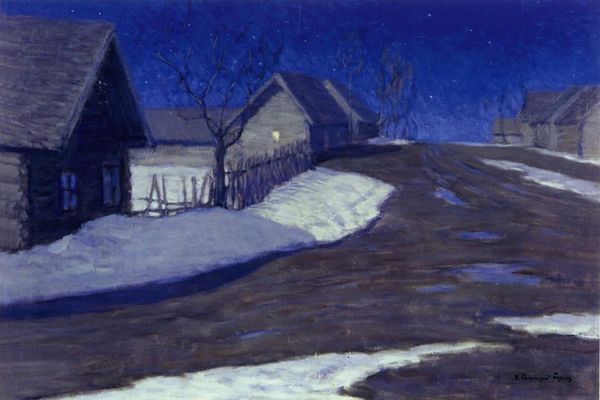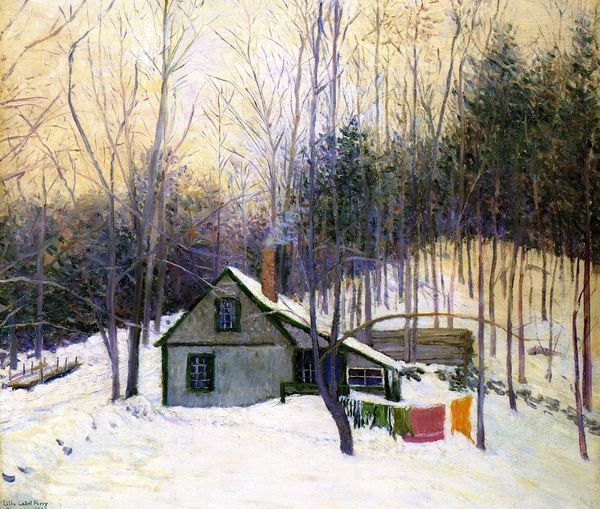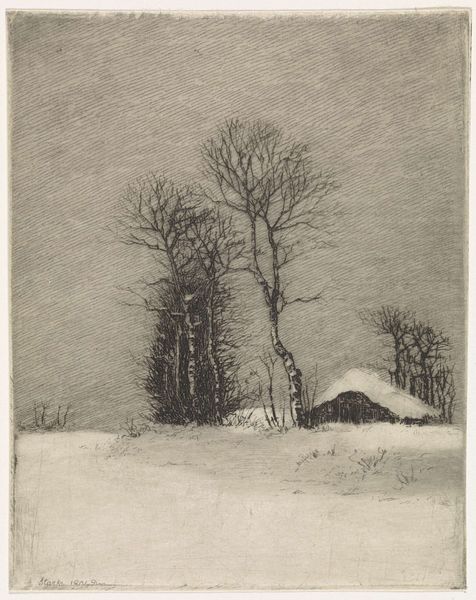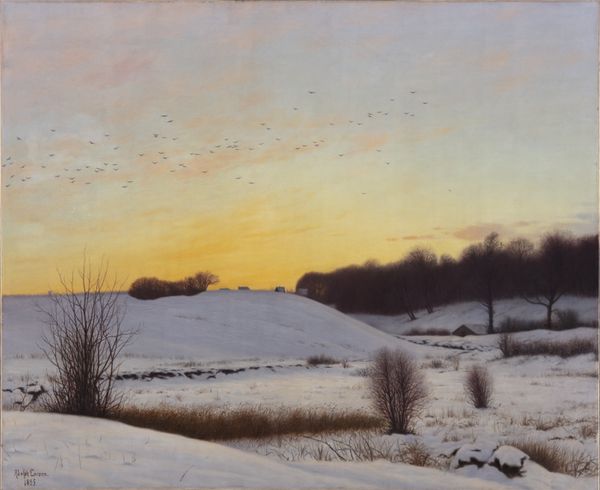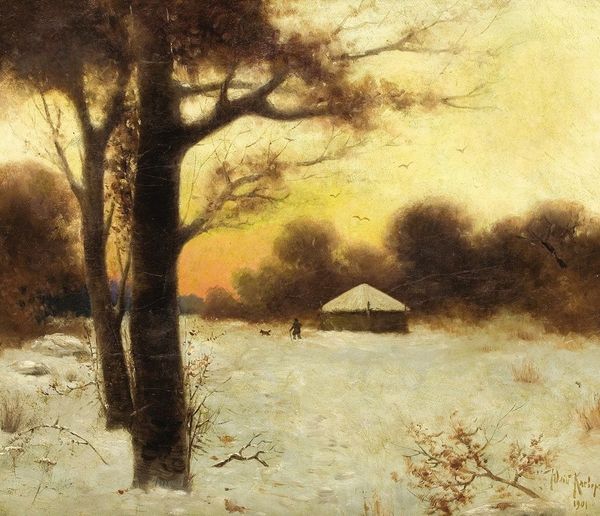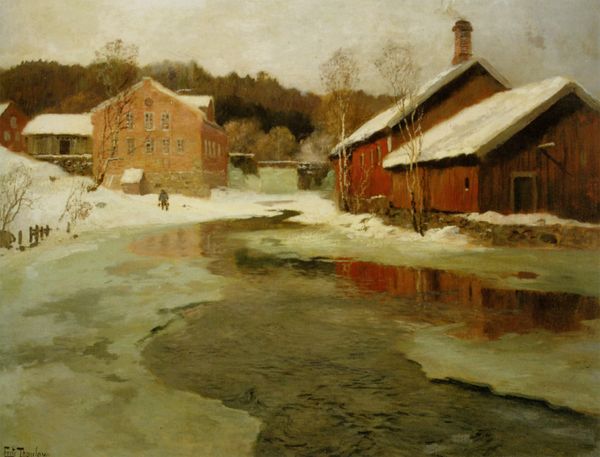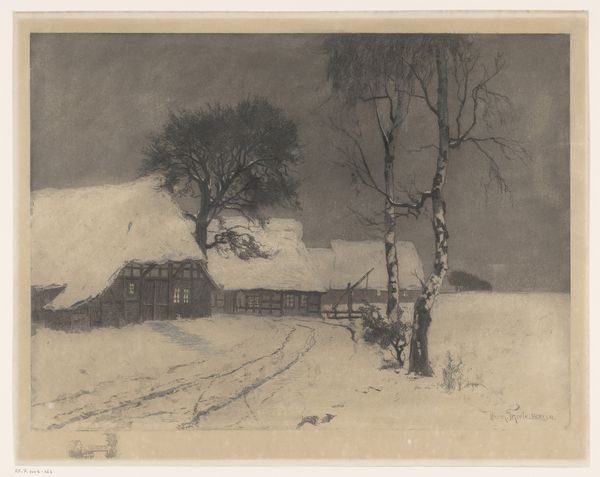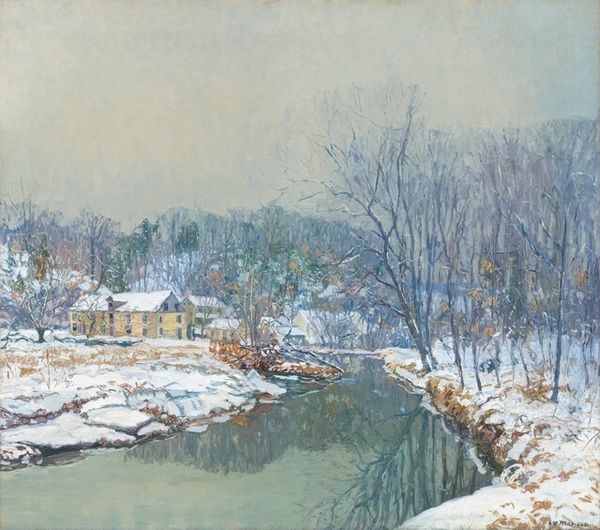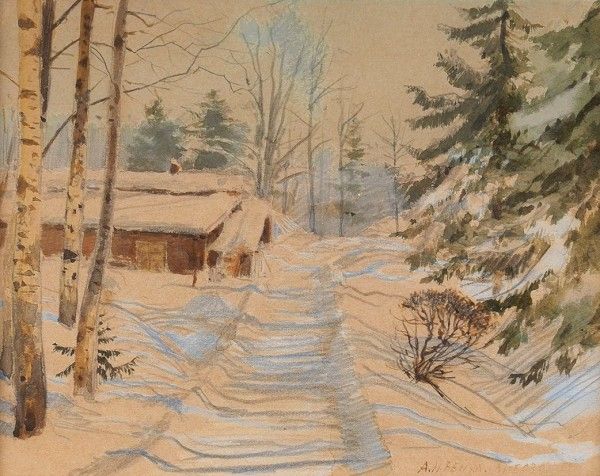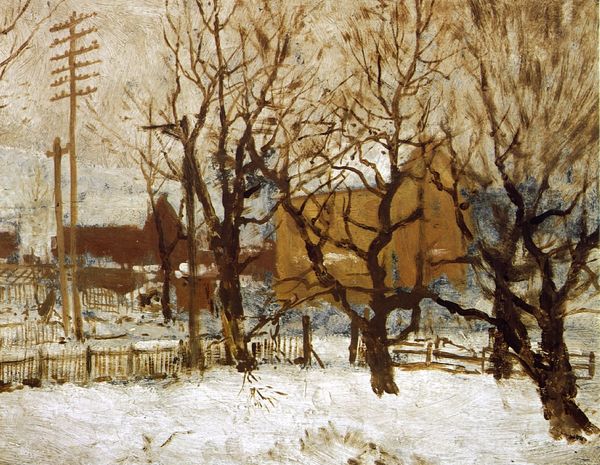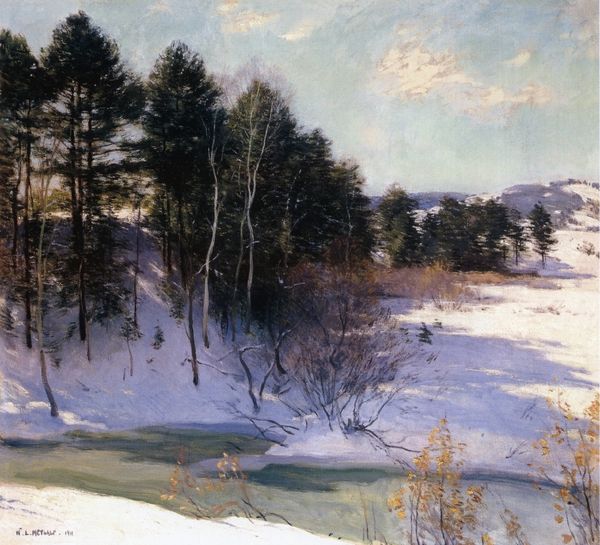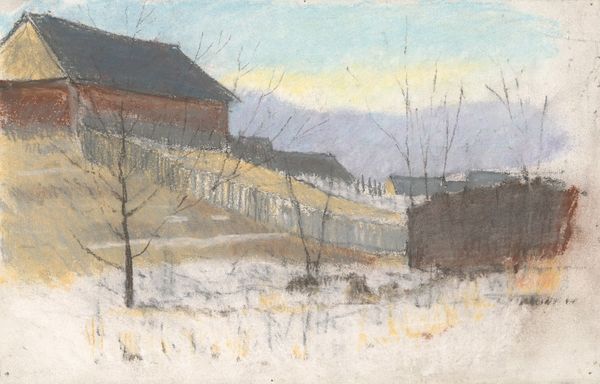
painting, plein-air, watercolor
#
tree
#
snow
#
sky
#
still-life-photography
#
painting
#
plein-air
#
landscape
#
house
#
watercolor
#
watercolour illustration
#
scenic spot
#
realism
Copyright: Maxfield Parrish,Fair Use
Curator: What a serene scene. This is Maxfield Parrish's "Afterglow," painted in 1947. The canvas presents a snow-covered landscape dominated by a quaint farm against a backdrop of softly colored hills and an ethereal sky. Editor: My first impression is the coolness of it; that blue-tinged snow. And yet, there's warmth flickering from the house windows. The composition is rather balanced; it is like Parrish has staged a theater scene for the canvas. What do you make of its visual politics? Curator: Parrish achieved such luminosity through glazing—layering translucent oil paints to refract light. I wonder if the industrial production of paints post-war impacted Parrish’s process, perhaps granting him access to a wider array of pigments than predecessors? Considering that, how did this specific landscape come to be seen and consumed? Editor: "Afterglow," like many of Parrish's works, circulated widely as prints, gracing calendars and magazine covers. They were images intended for mass appeal. This painting’s calm imagery possibly served as an antidote to anxieties of the post-war era, offering a vision of tranquil rural life even as urbanization accelerated. Its style also suggests an idealized memory. Curator: Interesting how commercial reproduction could be integral to the art itself; transforming the relationship between painting and audience. It allowed ordinary folks to engage intimately with art, adorning homes and impacting decorative arts industries. In this way, does accessibility risk a loss of value through ubiquity? Editor: Well, perhaps the point wasn't value in the traditional sense, but visibility. Parrish tapped into a widespread hunger for beauty. "Afterglow" may appear simplistic at first glance, but its endurance speaks to a profound desire for escapism and simpler, visually pleasurable representation—at least, this would have been understood within a culture hungry to define ‘America’. The museums weren't the only place of experiencing art, mass media competed and sometimes prevailed. Curator: Indeed. By embracing reproduction, Parrish arguably democratized art consumption, shifting the locus of artistic influence beyond galleries and institutions, influencing aesthetics from advertising to interior design, perhaps laying a foundation for the later accessibility embraced by Pop artists. Editor: In a way, “Afterglow” challenges us to reconsider what ‘art’ is and for whom it’s created. Its impact rests not merely in technical mastery, but on its life beyond the artist's studio. Thank you, “Afterglow”, for such insight into artistic intent. Curator: And also for providing the subtle lens through which commercial appeal intersects with, and is sometimes indistinguishable from artistic intent.
Comments
No comments
Be the first to comment and join the conversation on the ultimate creative platform.


